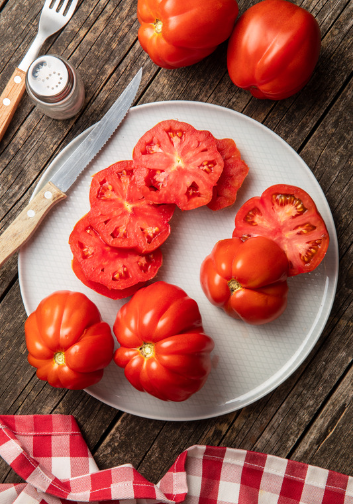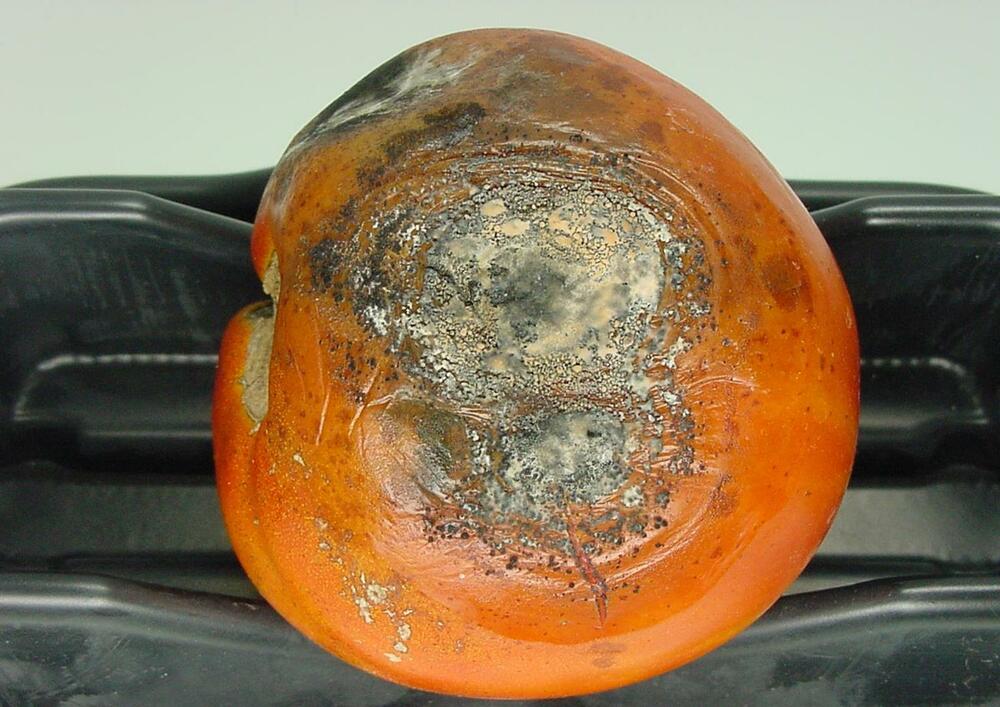Beefsteak tomatoes (Solanum lycopersicum) are meaty, juicy fruits perfect for summer sandwiches or as sliced snacks with a sprinkle of sea salt. Large, thickly fleshed beefsteaks are the biggest type of tomatoes, weighing 1 pound or more. Growing quickly to at least 6 feet tall, the late-maturing tomato plant will produce a bountiful harvest in about 85 days. It needs a sturdy cage, trellis, or stake to support its fruit. Learn to grow and care for this abundant plant and welcome a plentiful harvest to your vegetable garden.

| Botanical Name | Solanum lycopersicum |
| Common Name | Beefsteak Tomatoes |
| Plant Type | Annual, vegetable |
| Mature Size | 6 feet tall or more |
| Sun Exposure | Full sun |
| Soil Type | Fertile, well-drained |
| Soil pH | Slightly acidic |
| Bloom Time | Summer |
| Bloom Color | Yellow |
| Hardiness Zones | 2-11, USDA |
| Native Area | Central and South America |

When to Plant?
This will be determined by your planting zone. There is a final frost date for each area. As a result, you can plan your gardening activities around this date. Check our Frost Dates Across North America: First & Last Frost Dates Chart. However, the date will not be the same for every plant.
How to Plant
March is an ideal time for planting beefsteak tomatoes indoors. It’s best to start growing them indoors six weeks before planting them outside, or in other words, one or two weeks after the last frost date.
Sow seeds in plains and grow until they are at least 8 inches tall and outside soil temperature is 60°F.
The tomato must be seasoned before planting outdoors, usually in May.
Choose a sunny, well-drained bed to plant your tomatoes on.
Before planting, add compost or other organic additives to the soil and apply starter fertilizer to help small plants grow well. Provide a distance of at least 5 feet for good air circulation.

Sow them ½″ deep in warm soil at room temperature.
The ideal soil temperature is between 60°F and 90°F. Warm soil ensures faster germination.
Remove the weeds from the bed and mulch between the rows to prevent weed seeds’ germination and conserve moisture.
These tomatoes grow quickly and easily and sometimes produce massive fruits, up to 2 pounds!
Companions: Asparagus, onions, carrots, green onions, and garlic. It is not advisable to plant tomatoes next to cabbage or Brussels sprouts. Also, avoid planting tomatoes next to fennel, corn, and potatoes. This neighborhood can slow or stop tomato plants from growing.
How to Cultivate
Many farmers turn the soil over and use mulch, such as winter cover crops or straw.
As is the case with most tomatoes, pinching the first shoots will help them grow.
They should be tied to a lattice, placed on a pole, or in a cage. Rot and other disorders are common when steaks are not kept upright.
Tomatoes require at least 8 hours of sunlight a day.
Water – Water whenever the soil becomes dry down to about 1 – 2 inches below the soil surface. It might mean watering once a week in mild weather or watering up to three times a week in hot, dry weather.
Soil – 6.0 to 6.8. pH, well-drained
Spacing – seeds 1″
Seedlings 12″ to 36″ apart
Seed life: 4 years
Sun: Full sun at least 8 hours
Planting: 1/8″ deep in flats
Germination – 6 to 12 days, 60°F to 95°F
Day to Harvest: 80 – 100 days
How to Harvest
Tomatoes will begin to ripen from the bottom.
The bottom ripens earlier than the top, so keep an eye on the tomatoes’ bottom to see when it’s time to harvest.
Choose tomatoes when the skin looks waxy and smooth, even if the top is not yet mature.
To pick tomatoes, pluck the fruits from the plant with light rotational movements.
Hydroponics
Germination: Start by germinating your Beefsteak tomato seeds. You can do this by placing them in a moist paper towel or using a seed starting tray. Once the seeds have sprouted, transfer them to your hydroponic system.
pH range: Beefsteak tomatoes prefer a pH range between 5.8-6.8. You can use a pH meter or test kit to monitor and adjust the pH level of your hydroponic solution.
EC: The recommended electrical conductivity (EC) for Beefsteak tomatoes is between 2.0-3.0 mS/cm. This measures the total dissolved salts in the hydroponic solution, so it’s important to monitor it regularly and adjust as needed.
PPM: The recommended parts per million (PPM) for Beefsteak tomatoes is between 1400-2100. This measures the concentration of nutrients in the hydroponic solution, so it’s important to monitor it regularly and adjust as needed.
Humidity: Beefsteak tomatoes prefer a humidity level between 60-70%. Use a hygrometer to monitor and adjust the humidity level in your growing area as needed.
Light hours: Beefsteak tomatoes require at least 8-10 hours of direct sunlight or artificial light per day. If you’re growing them indoors, you can use grow lights to provide the necessary light.
Temperature air: The optimal temperature range for Beefsteak tomatoes is between 70-80°F (21-27°C) during the day and 60-70°F (15-21°C) at night. It’s important to maintain a consistent temperature in your growing area to ensure healthy growth.
Temperature water: The water temperature should be kept between 65-75°F (18-24°C) to promote healthy root growth and nutrient uptake.
With these guidelines, you should be able to successfully grow Beefsteak tomatoes hydroponically. Good luck!


